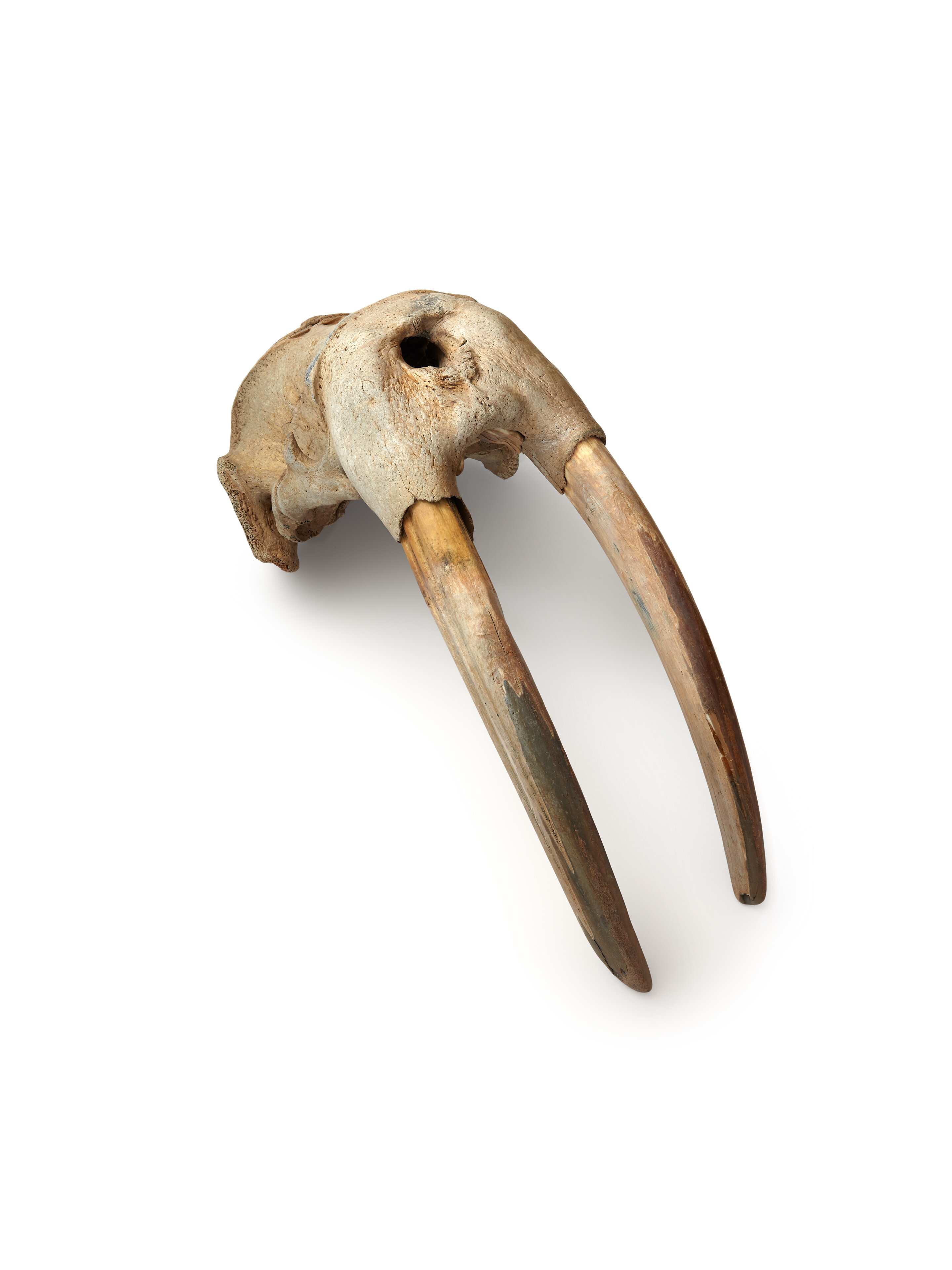It’s old news by now that Columbus was far from the first European to make it to the Americas. We know for a fact, for instance, that there were Vikings in Newfoundland 1,000 years ago – but what they were up to while they were there has always been a little more mysterious.
A new analysis of ancient walrus-ivory artifacts has yielded some clues, however. By tracing the DNA held inside more than 30 objects collected around the Viking Atlantic – as well as some pretty fun-looking experimental archaeology – researchers were able to trace their sources back to specific walrus populations in the Arctic, and thus to reconstruct precisely how the ivory made it back to Europe.

Vikings would have transported “packages” of ivory back to Europe like this. Neat(?)
Image credit: Mikkel Høegh-Post, Natural History Museum Denmark
“What really surprised us was that much of the walrus ivory exported back to Europe was originating in very remote hunting grounds located deep into the High Arctic,” said Peter Jordan, Professor of Archaeology at Lund University and one of the authors of a new paper detailing the research, in a statement.
“Previously, it has always been assumed that the Norse simply hunted walrus close to their main settlements in southwest Greenland,” he added.
Instead, the picture that emerges is one of trade high up in the arctic circle – a meeting between Old World and New. “[It] would have been the meeting of two entirely different cultural worlds,” Jordan said.
“The Greenland Norse had European facial features, were probably bearded, dressed in woollen clothes, and were sailing in plank-built vessels; they harvested walrus at haul out sites with iron-tipped lances,” he explained.
In contrast, the Tuniit and Thule Inuit, whom the Vikings most likely encountered in their walrus-shopping trips, would have had more Asian facial features, with fur clothing specialized for the harsh and cold environment they lived in. They would have hunted walruses in open waters, launching sophisticated toggling harpoons from their animal skin-over-wooden frame kayak and umiak boats.
“Of course, we will never know precisely,” Jordan said, “but on a more human level these remarkable encounters, framed within the vast and intimidating landscapes of the High Arctic, would probably have involved a degree of curiosity, fascination and excitement, all encouraging social interaction, sharing and possibly exchange.”
But here’s a question: what makes the team so sure that this scene of peaceful trade between two so dissimilar cultures is correct? How do they know the Vikings didn’t just hunt the walruses up in the Arctic themselves?
Well, here’s the fun part: to see which scenario was most likely, the team literally undertook the trading and hunting routes themselves, voyaging northwards in Norwegian fembøring and fyring boats to figure out for themselves how the Vikings might have made the journeys.
“Walrus hunters probably departed from the Norse settlements as soon as the sea ice retreated,” explained Greer Jarrett, a doctoral researcher at Lund University and one of the authors of the new paper. “Those aiming for the far north had a very tight seasonal window within which to travel up the coast, hunt walrus, process and store the hides and ivory onboard their vessels, and return home before the seas froze again.”
The sheer difficulty of these conditions – as well as the increasing demand for walrus ivory back in Europe driving walrus populations ever further north – likely caused the shift from the Vikings hunting for walruses themselves to trading with the Inuit, the team believe.
In total, then, the research reveals a fascinating story involving some of the earliest encounters between Europeans and North Americans – and provides some tantalizing evidence as to how they might have come about. But we shouldn’t forget, the researchers note, that we still only have half the picture.
“We need to do much more work to properly understand these interactions and motivations,” Jordan pointed out, “especially from an Indigenous as well as more ‘Eurocentric’ Norse perspective.”
The study is published in the journal Science Advances.
Source Link: Modern-Day Viking Voyages Reveal How Earliest Trade With Americans Was Possible